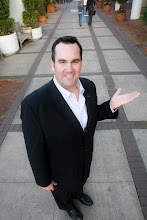In a single week, radio reaches more than 228 million Americans. That's 94 percent of everyone age 12 and older, according to Arbitron. So no matter what types of prospects you want to reach, radio advertising will help you do it. Plus, radio is mobile. Eighty percent of adults listen to radio in their cars, and a quarter of the population also listens while at work.
There's a lot that's new in radio. Many stations now stream their programming on the internet and reach additional local and even national audiences. What's more, if online listeners like what they hear in your streaming radio spot, they're just one click away from your website.
Radio provides an ideal advertising medium for small businesses, but running an effective campaign takes a bit of know-how. Fike Shway offers you these 4 tips to success:
1. Target Your Audience.
Every radio buy must begin with a clear understanding of the listeners you want to reach. We will determine the best target audience profile based on the demographics of your prospects. This should include their age, gender, where they live and other factors, such as household income. Then share this information during our consultation. We will discuss tell what percentage of our stations' listeners match these demographics and at what times of the day or during which programming you'll reach your best prospects.
There also may be qualitative characteristics of your ideal prospects you should consider when making your radio buy. A restaurant owner, for example, would look for a radio station whose listeners dine out frequently. We have access to both qualitative and quantitative information concerning our listeners and will be able to give you a customized proposal that includes a schedule with rating breakdowns. We will also provide you with a signal coverage map that shows precisely where their stations are heard.
2. Know What You're Buying.
The three most important elements when evaluating proposals are reach, frequency and cost-per-point. Reach is the number of your prospects that'll hear your marketing message. Frequency isn't the number of spots you run, but the average number of times your prospects will actually hear your message. Cost-per-point is the basis for evaluating cost effectiveness. CPP is what it'll cost to reach 1 percent of your target audience population, so it's the best way to compare the value of competing stations. Buy enough frequency to ensure your message is heard at least several times.
3. Look for Special Promotions/Events.
Radio stations are promotional engines, and there are at least two ways you can get on board. First, most stations offer the opportunity to sponsor news, weather reports or other types of regular programming. As a sponsor, you'll typically get additional mentions, such as with "billboards," which are announcements of your sponsorship that lead into special programming. Often, sponsorship will guarantee your spots air first in the commercial breaks, or pods, so you'll reach more listeners before they have a chance to switch stations or tune out during long breaks.
Radio stations also get involved in the community with special events. Look for sponsorship opportunities that include on-air mentions, as well as visibility at the events themselves. And be sure to seek out events that are well attended by your target audience and put your company in the spotlight.
4.Wow the Audience.
Effective commercials are key to a winning campaign. Our radio station group offers production at no additional cost and has produced thousands of successful commercial campaigns. But you should understand a few basics to be an effective part of the team and keep us on track.
Great radio spots grab and hold attention, usually through humor. They may also use sounds, compelling music or unusual voices to grab attention. Your spots must tell stories or present situations your target audience can relate to. To keep your audience listening to your spots month after month, make them part of an ongoing campaign theme. Your audience will listen for the newest versions, helping extend your message more successfully than if you were to run unrelated spots. For maximum results, make your call to action--a URL or phone number--easy to remember and tie it in with your company name or message.
That is Fike Shway. Contact Bryan Fikes today for your free 30 minutes assessment.
Sunday, December 2, 2007
Subscribe to:
Post Comments (Atom)

No comments:
Post a Comment